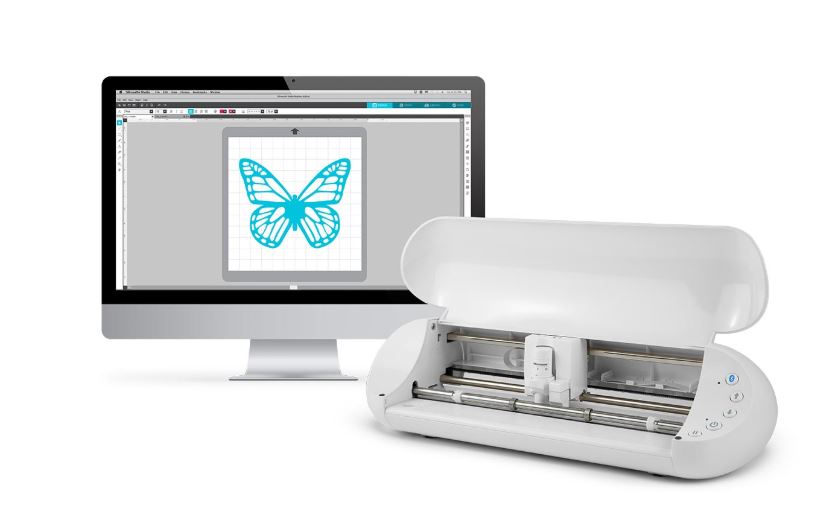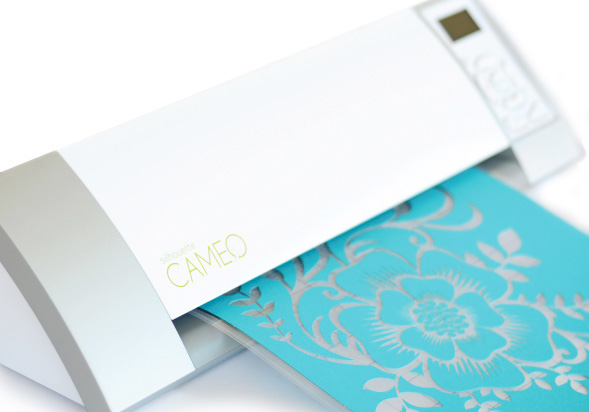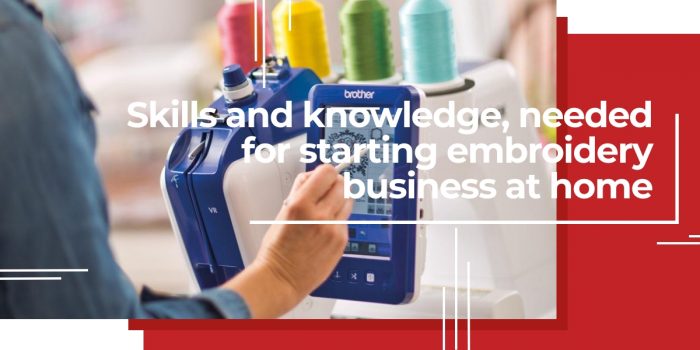Today’s article will speak about various extras that will add to your success. Also it’s a concluding installment to the “Home-run embroidery business” series course. Thus it includes issues, we haven’t yet discussed. If you’ve just joined up on the theme, we strongly recommend you to go over the previous 5 articles to get a proper basis, so to say. The articles can be found in Royal Present Embroidery blog on our page.
So, the plan of our today’s article will consist of the following topics:
- Additional equipment for home-run embroidery business (various decorative techniques and equipment, needed for their implementation in the frame-work of home-based embroidery business).
Note: When describing equipment for expanding of a home embroidery business, we’ll be talking only of one that can be positioned and operated at home. We won’t focus on more advanced ways for implementation of decorative techniques in questions which, though more efficient, are not suitable for home-run enterprise. - Hiring help. Does a home-run embroidery business require hired help?
- Home-run embroidery business: legal issues.
So, shall we start?
1 – Additional equipment for home-run embroidery business
Upgrade to an embroidery machine (a more advanced embroidery machine, a combination sewing and embroidery machine, another embroidery machine). This category is the most common way of business expansion. Enlargement of your equipment park is needed if the volume of your orders is expected to or has already become larger. Besides growth of production such enlargement enables incorporation of new embroidery techniques and possibilities. All of them have to do with features of the machinery: 3D Foam Embroidery (“puffy” foam embroidery), embroidery on caps (and other “not flat” items), sequin embroidery etc. Advantages of such expansion are quite numerous:
– No extra skills needed (taking that you already know how to operate an embroidery machine).
– No extra help needed. You don’t have to hire another person to help you with operation. Well, of course, if you get several embroidery machines, then you’ll definitely need to hire help, but then again –in this case you probably won’t be a home-run business any more.
– No extra room needed. Here again, when you’re getting a second or third embroidery machine they’ll certainly take up extra room in your house. So here, you’ll need to think of moving to a bigger venue. If you insist on staying “at home” expansion of venue is limited to a separate room, garage and the attic. Otherwise, you’ll need to rent one.
Now let’s speak of techniques and equipment, other than embroidery machines. We’ll address the issue through techniques, which such equipment is needed for.
Rhinestones and nailheads
– What you’ll need: Rhinestones, equipment for making (cutting) rhinestones’ templates and equipment for rhinestones application. Equipment for rhinestones application can be of two types: manual and automatic. We’ll leave the automatic one out of home-run embroidery business framework because of its size and its price. Now, there’s a considerable gap between various types of manual rhinestones application devices. Thus, in order for you to decide which of them will suit your business setup, we’ll briefly describe the method of work.
– Method: Rhinestones have glue on their “down” side, which, when melted, adheres them to the fabric. Rhinestones can be arranged into patterns or applied piece by piece. The patterns are either purchased in the form of ready-made “iron-ons” or made with the help of special equipment. Designs for rhinestones patterns are either purchased or created with the help of software. After being created digitally, designs are cut into templates. Rhinestones, then, are arranged into the cut-out templates and “backed” onto fabric.
Silhouette Portrait 2 Plotter
To create (cut) templates in the framework of home-run business you can use plotters (cutting machines) e.g. Cricut, Silhuette etc. To apply those templates you can use an iron, a pressing station or a heat press. When rhinestones are applied piece by piece (not in a pre-made pattern) you can use such tools as Glitz Up by Colman and Company or other manufacturers (Donwei, Hivis, Darice etc).
Bonus: The cutting machines that we’ve mentioned can be used not only for making templates for rhinestones designs. You can also employ them in cutting fabrics for quilting, appliqué (even reverse one) etc. Use their versatility to your advantage and you’ll be able to expand your business even more!
– Skills needed for adding rhinestones: knowledge and skills, required for the equipment operation. Depending on the type of the equipment such skill might require quite some time to be mastered.
– Where to use: any embroidered item be it apparel, accessory or even a household attribute. Items in these categories that generate most profit are embroidered baby girls’ apparel, embroidered christening items, Christmas embroideries.
Con: Extra room might be required for the equipment.
Studs
– What you’ll need: studs, stud press or just needle-nose pliers.
– Skills needed for adding studs: other than patience and precision (which all embroiderers already have) – none.
– Where to use: Studs can enhance the look of embroidered leather and denim clothes, bags, backpacks and more.
Silhouette Cameo
Sublimation
– Method: An image is printed (with the help of a particular kind of ink) onto a special paper and then this paper is heat-pressed onto fabric.
– Equipment needed: A printer for sublimation (e.g. Cricut, Silhuette, Ricoh, Epson etc.), paper and ink for sublimation and a heat-press.
– Skills: No particular skills are required, unless you want to do your own designs for the printing. In this case you’ll also need graphic design software.
– Where to use: Interior accessories, household textiles, athletic apparel, bags etc. When combined with embroidery, sublimation can create a unique visual and textural effect. For example: a logo for an athletic jacket can be done with combination of such techniques. A pillow case with a sublimated picture and stitched-out embellishment becomes a statement piece of any interior.
– Cons: Sublimation can be used only with polyester-based materials (ink won’t stick cotton). Good results require images to be applied onto light-colored materials. You will need extra space for all the equipment. Also, there’s a limited time during which you should use up the inks, otherwise they go bad. This means that if you don’t have enough orders for such a service, the ink issue can cause you money loss.
Vinyl (HTV – Heat Transfer Vinyl)
Method: A design of an image is cut out of vinyl and then applied onto the item.
Equipment: A cutting machine (e.g. Cricut, Silhuette etc.) or, if the design is simple you can use scissors, vinyl (fabric kind), iron (or if you want you can use heat press or a lighter (and more compact) versions of heat press (like Easy Press that is offered by Cricut).
Skills: Non particular, except if you want to make your own designs.
Where to use: Apparel, interior decorative attributes, personalized gifts and souvenirs etc.
Pros: You don’t need a heat press.
Cons: If you don’t have a cutting machine, it’d be quite difficult to make a really stand-out décor.
Fabric painting and stenciling
Method: Basically you just draw images onto fabric.
Equipment: Fabric inks for painting. Stenciling requires pre-made templates (which can be made by cutting machines or be cut out by hand).
Skills: Should be able to draw well.
Where to use: embroidery enhancement in general.
Example: Red Work and other linear embroidery combined with splashes of colors in its background can give absolutely fantastic visual results. Use it on bags, apparel, interior attributes and more.
In the conclusion to the description of all the additional to embroidery techniques and equipment needed for their implementation, we’d like to give a word of advice.
Advice: Don’t rush into buying the equipment. Before you do, consider renting of the equipment or outsourcing. If some of your current orders require one of the abovementioned equipment, it doesn’t mean that in future the demand will be the same. Start with the outsourcing, using services of other businesses to meet the current demand of your clients. Then have a trial version of such addition to your business by renting the equipment. If you see that the flow of such orders is steady, you can get your own equipment.
Hiring help. Does a home-run embroidery business require hired help?
There’s or will be a point in your business development when you’ll need to hire help. How do you know when the point is? Well, it’s pretty simple, as your business grows, you, as an owner of a one-man enterprise, will find yourself doing several jobs at the same time. You’ll be embroidering, packaging, delivering, promoting, communicating with clients, attending to your social media accounts etc. As long as you don’t find it difficult to do all of the parts in time and without any mistakes, you’re fine.
Home-run embroidery business: extras that will add to your success
When you feel that there can be a problem in some of them, consider getting help. Mind, we don’t say “hire help” because there’re other ways of aiding small bumps in your work. Further we’ll give a managing formula for solving the issues of help.
Understanding your home embroidery business demands:
~ Log information related to orders into your business agenda. This will help you manage your orders in a more efficient way. Also it’ll show you your progress. The information you log should consist of the following parts: type of order (size, complexity), time it required to be finished, deliver service used, customer feedback and price. If there was any extra issue with the order (e.g. it needed rare materials or required outsourced services etc.) add this information too.
~ Analyze the information you’ve logged regularly (say, every 3 months). When analyzing pay special attention to the “extra issue” part, especially during holiday periods.
~ Identify the mistakes you’ve made during last logged period.
Examples: If you see that every time before holidays your delivery service is lacking behind, that’s a red flag. If you see that your machine required more visits to the service center than usual, that’s a red flag too. If you see that you don’t follow up with your social media lately – again it’s something to be addressed. Anything that is out of the usual course is worth your attention.
Address weak spots that you’ve noticed. If you can address those weak spots simply by re-organizing your schedule, working program, services that you use etc, it means you don’t need to hire help. If, however, the things say otherwise, look into possible solutions: partnering up with other embroiderers, outsourcing from other shops or hiring extra help.
Outsourcing can help you manage orders of large volume and complexity. Also this type of help can help you expand your business (services that it offers to its customers) without major expenditures on the venue or other people’s salaries.
Partnership with other embroiderers, besides help with the embroidery per se, can also bring investment (in the form of their own equipment, materials, time) into you business. However, on the downside, you lose freedom of making your own decision as now you share it with your partner. Also, if your partnership eventually ends, you might lose customers.
Hiring help should be considered as an option when you need help in areas where you yourself can be employed.
Example: Holiday’s period is the time when you need help (seasonal help to be more precise). You can consider hiring help for minor chores like adding labels or cleaning. Specific help is worth hiring, if you need to address issues, which simply don’t have skills for (attending to websites or internet accounts, creation of business plan, advertizing etc.)
Home-run embroidery business: legal issues
When you make a hobby into a business there’re a lot of things to consider. One of them is the legal issues, concerned with the transition and the conduction of business itself. Now, as legislation of each country has its own rules and formalities concerning small business organization, we won’t dwell on the topic in detail. Instead, to save the time of our readers, we’ll give general guidance line, which aspiring entrepreneurs should take up to make their business official.
The first and the best thing you can do to do is to consult a professional (business adviser, attorney or at least an accountant). People of such trades make their living helping small businesses thrive. That is why, if you’re serious about starting a business, you need to get their consultation. If, for any reason, such consultation is out of question, follow the algorithm, we’ve given below.
In general, the algorithm of registration of home businesses goes like this:
~ Select of a name for your business and register it.
~ Business structure. Choose between sole proprietor and a limited liability company (LLC).
~ Get according licenses and permits. To learn which licenses and permits you should get, you need to check with the local authorities on the matter. Official government websites usually provide all the necessary information. In some countries the entire registration process is fully automated and can be done online.
~ Tax certificate. Then you need to register with the tax services and get a tax number according to the business structure that you’ve chosen.
~ Business bank account. By all means get a business bank account. Having a separate (from your personal) bank account for your business helps in the long run. Should you apply for funding or load etc. for your business, you need to have good credit history as business, which is checked through the history of the account.
~ Join national trade organization
Now that’s a lot of paper work, right? But, don’t worry; as soon as you start dealing with all the work, it’ll all get much more clear and simple. Besides, knowing that there’re more benefits of being “official” than otherwise, you’ll certainly get it done quicker. What are the benefits you say?
~ An officially registered business has nothing to worry about tax-inspection wise.
~ An officially registered business can apply for funding and loans on better conditions than individuals (LLCs and corporations on this wise have advantage over sole proprietors).
~ An officially registered business is obliged to “special” discounts on equipment, delivery services from the side of their suppliers. Same goes for some educational programs.
~ An officially registered business can hire help.
~ An officially registered business has a larger group of customers as some companies can work only with licensed businesses.
Now that the legal issues are being discussed, we’ve come up to the final part of the article, and the series in the whole – the conclusion.
The conclusion:
“Home embroidery business” series is drawing the bottom line. In 6 articles of the series, we’ve gathered basic information, which, hopefully, help any aspiring entrepreneur get its business dream fulfilled. How to start your home embroidery business? Where to look for the clients? How to deal with managing issues? Now you know how to answer these questions. All you need to do is to take this information and use it to create your own embroidery business. Will it be hard? Probably, but be sure it will worth it! With craft-selling industry being one of the most quickly developing ones, it gives really good opportunities to generation of profit. Why not use them, then? That being said, we wish everyone, who’s setting up their home embroidery business good luck and ever-growing sales!
You may also like
Skills and knowledge, needed for starting embroidery business at home

Author: Ludmila Konovalova
My name is Ludmila Konovalova, and I lead Royal Present Embroidery. Embroidery for me is more than a profession; it is a legacy of my Ukrainian and Bulgarian heritage, where every woman in my family was a virtuoso in cross-stitch and smooth stitching. This art, passed down through generations, is part of my soul and a symbol of national pride.
Date: 25.11.2018







 Get Sign-In Link
Get Sign-In Link Login with Google
Login with Google Login with Facebook
Login with Facebook Login with Amazon
Login with Amazon Login with Paypal
Login with Paypal